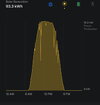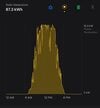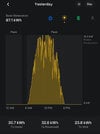System info:
Solar Panels: 43 of 425watt = 18,275 watts
Solar Inverts: 3 of Delta M4-TL-US = 12,000 watts.
Battery: 3 PowerWall 2 = 40.5 KW Storage
I understand that Tesla do clipping to maximize production but my system is doing to much, from 10am - 3:30 my solar output is max out to 12.2kwh either sunny day or cloudy day… i believe that if they put the right size of inverter i will gain about 8-15 more kw production… on a good day while watching the gateway web i seen alot the system will go up to 13.7 kwh but it will go back down to 12.2kwh. My system is being limited because of the inverter they put on.
Also I didn’t get my inspection or PTO yet but my system is already selling to the grid when all my battery are charged up… I don’t see the notifications like everyone have “Self-Consumption Only” on the app…
Sunny day

Cloudy day

Solar Panels: 43 of 425watt = 18,275 watts
Solar Inverts: 3 of Delta M4-TL-US = 12,000 watts.
Battery: 3 PowerWall 2 = 40.5 KW Storage
I understand that Tesla do clipping to maximize production but my system is doing to much, from 10am - 3:30 my solar output is max out to 12.2kwh either sunny day or cloudy day… i believe that if they put the right size of inverter i will gain about 8-15 more kw production… on a good day while watching the gateway web i seen alot the system will go up to 13.7 kwh but it will go back down to 12.2kwh. My system is being limited because of the inverter they put on.
Also I didn’t get my inspection or PTO yet but my system is already selling to the grid when all my battery are charged up… I don’t see the notifications like everyone have “Self-Consumption Only” on the app…
Sunny day

Cloudy day




